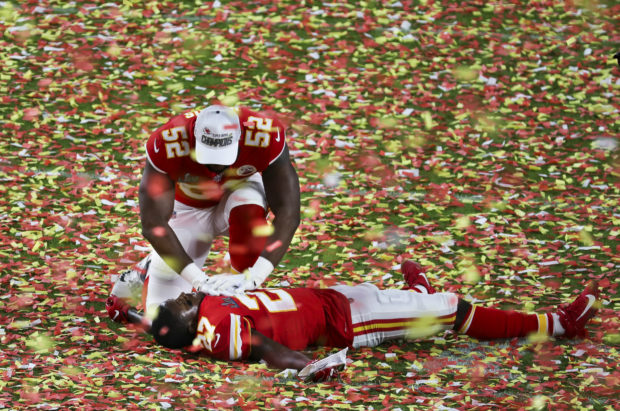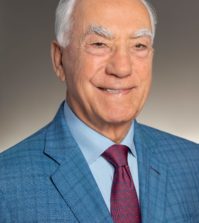- FOKION AVGERINOS – DR. IKE: Athletic Director, Youth Mentor, and Healer
- American Hellenic Institute’s Golden Jubilee Celebration
- Leadership 100 Concludes 33rd Annual Conference in Naples, Florida
- Louie Psihoyos latest doc-series shocks the medical community The Oscar–winning director talks to NEO
- Meet Sam Vartholomeos: Greek-American actor
“Eye Spy” a Moment: Inside the Lens of Photojournalist Tasos Katopodis
Journalists report a story. Sometimes they tell a story. Sometimes it’s a little bit of both. Good journalism tells a good story based on facts. Journalists, for the most part, are writers. They love words. They also know they have to weave their love of words into presenting facts. How they tell that story makes all the difference between truth and fiction, but a journalist has an obligation to present a truth. If they cannot give you the truth, they will question a lie. The goal of every good journalist is to present the truth of any situation. Photojournalism is not so different. Photojournalists love photography. Their images tell you a story based on facts. What you see is the moment. Photojournalists wait to capture that moment. They will arrive at a location and set up in advance, waiting around for that perfect, defining moment. Ever since he was in elementary school, Tasos Katopodis knew he wanted to be a photographer. As he puts it: “I caught the bug early in the dark room”. Those introductory classes led him to take more classes in high school, at Columbia College in Indiana, and then to a staff position as a photojournalist for The Times of Northwest Indiana. He was with this publication for three and a half years, covering big sports events like the Superbowl and other major events that included celebrities.

The Washington Post, CNN, MSNBC, GettyImages, American Express, BMW, NHL images, and PGA photojournalist Tasos Katopodis
Tasos admits that the news he reports isn’t always going to be exciting. He can go through periods of time where it’s not that interesting and very mundane. He believes “if you are good at sports, you are good at news.” I don’t think he meant athletically, but the fact that sports can not always be an exciting event like the World Series. He has to find ways to make it interesting, or in this case, look interesting, even if it’s just a regular baseball game. That translates to news where you have to photograph people sitting around a table at an impeachment hearing. There’s not much to see there unless, in a powerful display of disdain, a House Speaker is tearing up a President’s State of the Union Address on another day. One moment photographed can be worth a thousand words written, and not spoken. With that kind of histrionic, if you happen to be in the right city at the right time, it can get very exciting, especially with a niche market in politics.

WASHINGTON, D.C. – MAY 31: Protestors and Police face off in front of the White House protesting the death of George Floyd at the hands of Minneapolis Police in Washington, D.C. on May 31, 2020. (Samuel Corum/AFP)
In 2017, in support of his wife’s career, Tasos found himself moving to Washington DC. It proved to be the right time for Tasos’ career as well. He always had an interest in history and politics. Many of his inspirations in his college years were a lot of photographers that came out of Chicago and war/conflict photographers. The move to DC gave him a leading edge to capture groundbreaking and controversial historical moments. He was able to cover the last two weeks of the Obama administration, the next four years of the Trump administration, and President Biden’s inauguration. In between all these events it got very exciting, if not dangerous.

Demonstrators hold a protest in response to the police killing of George Floyd in Lafayette Square Park on May 29, 2020 in Washington, DC. Across country, protests against Floyd’s death have set off days and nights of rage as the most recent in a series of deaths of black Americans by the police. Earlier today, former Minneapolis police officer Derek Chauvin was taken into custody and charged with third-degree murder and manslaughter.
Last year, with the amount of news being covered-from the height of the pandemic to the death of George Floyd, antifa, and movements like Black Lives Matter and Proud Boys-there was a lot of good and bad news to report. This may be where “being good at sports to be good at news” can also come in handy in a physical sense, especially if you are trying to dodge a few bullets or bear mace, which is 100 times stronger than pepper spray.
Tasos was lucky though. He wasn’t the subject of any direct assaults, but he found himself ducking for cover, as he was trying to get the cover, standing at the edge of an insurrection and attack on the Capitol. Tasos confirms the dangers involved: “You always have to be prepared.” In situations like this he comes equipped with his camera, his tripod, his bullet proof vest, gas mask, and first aid kit. He felt badly for the officers who were hurt, but he feels fortunate not to have gotten thrown directly in that line of fire. He knows that violence can happen on both the left and the right side of politics. Tasos, like his family of photojournalist friends, all choose to be in situations that can put their lives and safety at risk, all in a day’s work, to bring us the powerful images of what we are not able to witness in person. Photojournalists, like Tasos, bring us that magnificent photorealism that makes us almost feel like we are really there.

Kansas City Chiefs defensive back Rashad Fenton (27) and linebacker Demone Harris (52) celebrate a 31-20 win over the San Francisco 49ers in Super Bowl LIV at the Hard Rock Stadium in Miami Gardens on Sunday, February 2, 2020.
Some of the challenges he has faced are showing up ahead of time, going through several security checks, and setting up for the shots. It takes up a lot of time, and he finds himself waiting around all day for that moment. Situations can often change, so learning how navigate your way through those changes, adapt on the fly, and troubleshoot come with experience. Going from a dark room to digital photography has also made it easier to send pictures to his editor in real time, minimizing the amount of time it takes to finalize a photograph and get it out there. His goal ultimately is to capture history in the most realistic way possible, without trying to editorialize it.

Protesters attempt to enter the U.S. Capitol Building on January 06, 2021 in Washington, DC. Pro-Trump protesters entered the U.S. Capitol building after mass demonstrations in the nation’s capital during a joint session Congress to ratify President-elect Joe Biden’s 306-232 Electoral College win over President Donald Trump.
Tasos loves what he does. It’s what he lives and breathes. Not every one is lucky enough to say that, but knowing what you want to do early on in life and actually doing it makes all the difference. It’s what motivates him to get up everyday, even when he had to work at a steel mill during the day for ten years and pursue his real passion at night. Eventually his dedication and commitment paid off, and he got there. He gets to do what he loves all the time now, working independently and as part of family of photojournalists. With his larger than life and true-to-life images published in TIME, Sports Illustrated, The Washington Post, CNN, MSNBC and a client base that includes Getty images, American Express, BMW, NHL images, and PGA among others, his skills are in high demand. He will continue to bring us those defining moments that may not make history always worth repeating, but well-worth documenting. For what is history worth if it’s not worth photographing and reporting? If art imitates life, you have to see it to believe it.
Tasos looks forward to his next adventure covering the Summer Olympics in Tokyo, followed by the winter games in Beijing.















0 comments